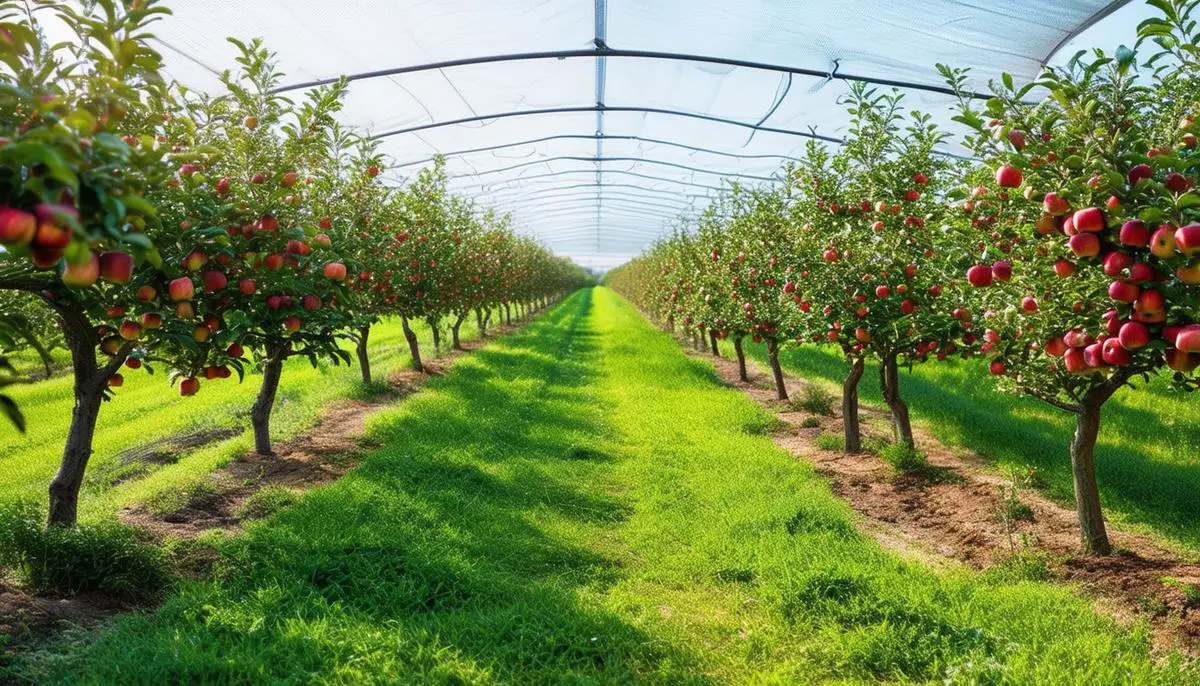Labor Costs and Availability
The apple processing industry grapples with labor costs and workforce availability. Apples bruise easily, making mechanical handling impractical during harvest. Instead, farm workers pick apples by hand, making labor one of the biggest expenses in apple production.
In Washington State, the leading apple producer in the United States, labor costs account for up to 25% of production expenses. As labor markets tighten, hiring orchard hands becomes more expensive. Farm wages have been increasing faster than non-agricultural sectors, straining growers' budgets.
The H-2A agricultural guest worker program allows U.S. agricultural employers to bring in foreign workers for seasonal contracts. However, it's not cheap. Growers must cover housing, transportation, and wages, making it an expensive but often necessary choice. In Washington State, H-2A workers must be paid a minimum of $19.25 an hour, including additional benefits like free housing and transport.
Technological Aids in Apple Harvesting
- Platforms that transport workers to treetops
- Reduced ladder time
- New orchard setups with trellised trees
- Dwarf rootstock for easier access
By 2010, about 11% of Washington apple growers had adopted such platforms. These advancements increase productivity while reducing reaching and straining.
Labor costs remain a persistent challenge. However, these hurdles inspire innovation and collaboration among growers, marketers, and technologists, ensuring apples continue to be an American staple.
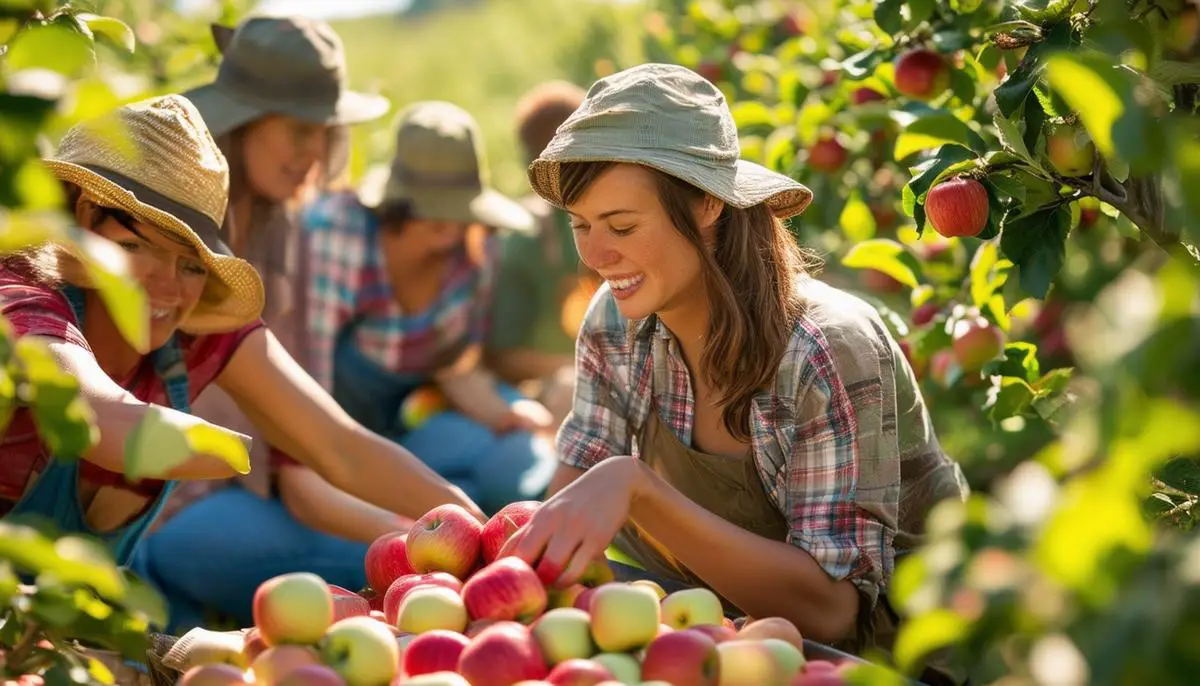
Technological Advancements
Let's dive into the juicy world of technological advancements in apple processing! Imagine robots and AI taking over the routine tasks of sorting, peeling, and packaging apples. These high-tech helpers handle our beloved fruits with extreme care, ensuring each apple reaches us in perfect condition.
Key Technological Innovations:
- Advanced optical sorters: Scan apples for color, size, and imperfections, processing thousands per hour.
- Cutting-edge peeling technologies: Use lasers and blades to remove apple skins with incredible accuracy, minimizing waste.
- Automated packing systems: Sort apples into boxes or bags quickly and accurately, reducing damage and maximizing shelf appeal.
- AI-driven predictive maintenance: Identifies potential issues before they occur, minimizing downtime and maximizing efficiency.
These advanced optical sorters accelerate the process and ensure consistency, benefiting both growers and apple enthusiasts. The precision peeling technologies not only save time but also improve yield, boosting profits and giving us more delicious apples to enjoy.
Automated packing systems ensure apples of different varieties and sizes are placed in the right containers. Meanwhile, AI plays a crucial role in predictive maintenance. Sensors in machines monitor performance and alert operators to problems, keeping the apple supply chain running smoothly.
"While the initial investment in these technologies can be substantial, the long-term savings are significant."
By reducing costs and increasing efficiency, technology transforms the apple processing industry into a streamlined operation ready to meet our insatiable appetite for crisp, juicy apples!
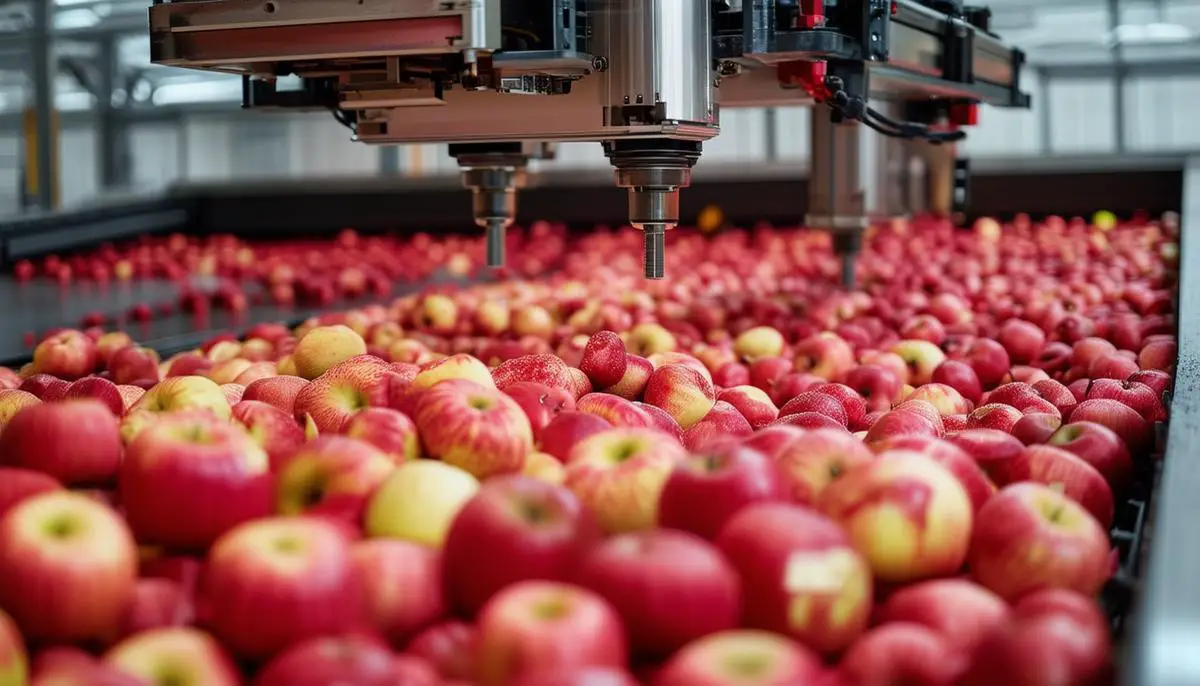
Market Expansion and Diversification
Let's explore the exciting possibilities of market expansion and diversification. Imagine apples as the star ingredient in a variety of delightful, health-boosting products. We're talking about transforming apples into juices, ciders, dried snacks, and purees that excite your taste buds.
Innovative Apple Products:
- Artisanal, cold-pressed, organic apple juice: Not just for kids' lunchboxes anymore; it's becoming a gourmet beverage.
- Apple cider: Making a comeback, especially among Millennials who appreciate artisanal products.
- Dried apple snacks: Lightweight, delicious, and nutrient-packed – perfect for on-the-go eating.
- Apple puree: Incredibly versatile, used as a spread, yogurt mix-in, or base for sauces and dressings.
Picture upscale juice bars offering apple blends mixed with kale, spinach, or ginger. The hard cider market has grown rapidly, offering gluten-free options and seasonal flavors. Dried apple snacks, whether coated in cinnamon or dipped in dark chocolate, offer a satisfying crunch and health benefits.
Diversifying into these apple-based products isn't just about taste; it's about meeting the demands of health-conscious consumers. Organic and non-GMO options are increasingly important. Today's shoppers carefully examine labels, seeking pesticide-free produce that's environmentally friendly.
Diversification also helps spread risks. By expanding into various products, the apple industry can protect itself against challenges like frost or drought. If fresh market sales decline, there's still demand for cider, juice, or dried snacks to maintain revenue.
Through market diversification, the apple industry can explore new opportunities, turning every bite, sip, and crunch into a celebration of health, flavor, and environmental responsibility. Here's to a future filled with endless apple possibilities!
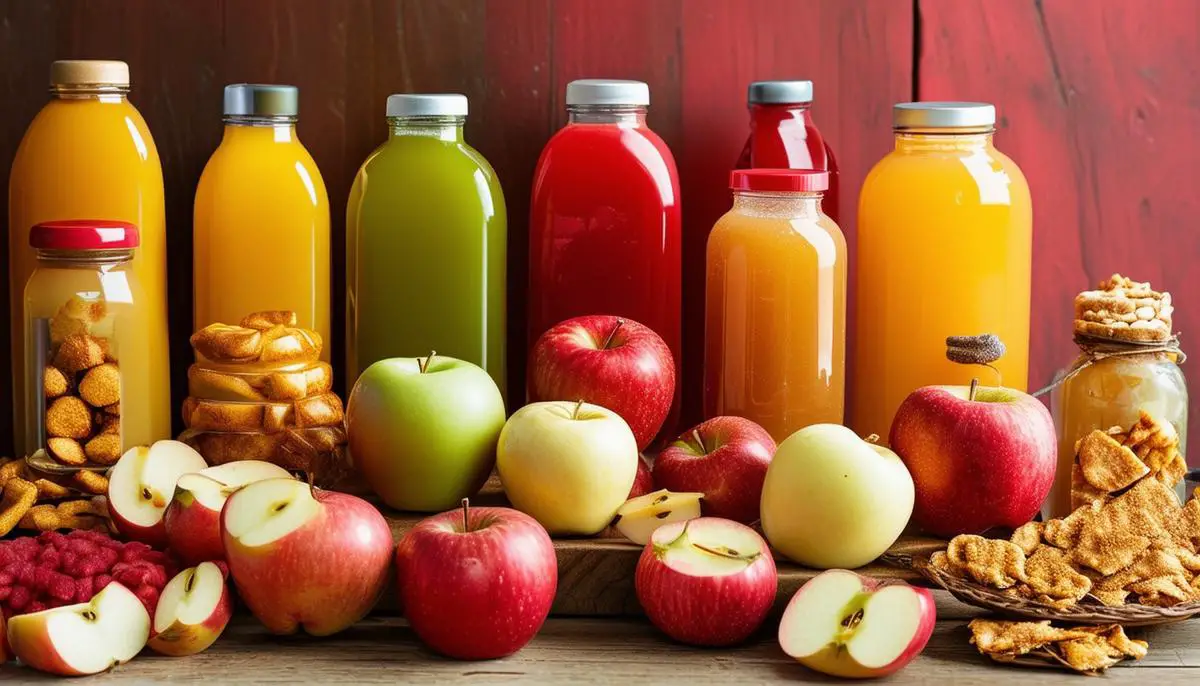
Regulatory Challenges
Navigating the regulatory maze in the apple processing industry is like trying to tango while juggling. Food safety standards are the big kahuna, safeguarding our breakfast tables but making compliance a real head-scratcher.
Shipping apple products across borders? Brace yourself for a smorgasbord of rules. The FDA in the U.S. and the EU's guidelines across the pond dictate everything from pesticide residues to microbial contamination limits. One misstep and your apples could be left in quarantine limbo.
Labeling regulations are another beast entirely. Designing an eye-catching label that adheres to strict criteria is like performing brain surgery while riding a unicycle. From nutritional facts to allergens, country of origin to storage instructions – it's enough to make a bureaucrat's head spin.
And just when you think you've got it figured out, the goalposts shift. Regulations change faster than you can say "Granny Smith," requiring constant vigilance and adaptation.
But here's the juicy bit – complying with these standards actually benefits the industry in the long run. Stricter regulations mean higher quality products, enhancing brand trust and loyalty.
Consumers appreciate knowing that their apple slice or tangy cider meets the highest safety standards.
So here's to the unsung heroes in compliance departments, keeping the apple industry crisp and honest. They handle the regulatory minefield with the same precision we savor when biting into a perfectly ripe apple. 🍎⚖️
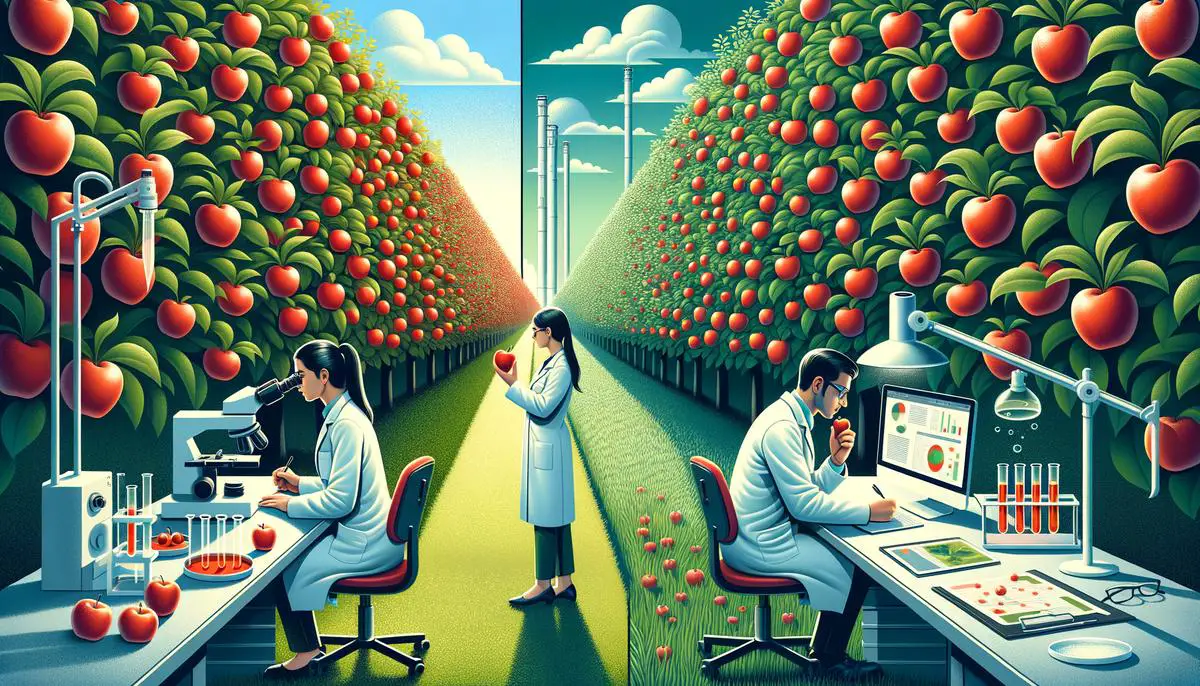
Climate Change and its Impact
Climate change is hitting the apple industry like a wrecking ball at a fruit stand. Erratic weather patterns, rising temperatures, and shifting seasons are turning orchard management into an extreme sport.
Picture this: an unseasonably warm spring tricks apple blossoms into an early debut, only to be zapped by a late frost. It's Mother Nature's twisted joke on our beloved orchards! These weather whiplashes can decimate yields, leading to uneven ripening and increased pest problems.
Rising temperatures are another party pooper. Apples prefer a temperate climate, but global warming is cranking up the thermostat. Heat stress can lead to smaller, less satisfying apples. Worse yet, summer scorchers can sunburn the fruit, making them look more fit for a tanning contest than a grocery store shelf.
Water scarcity is the cherry on top of this climate change sundae. With more frequent droughts, growing plump, juicy apples is like trying to fill a water balloon with a eyedropper. The result? Stunted, mealy fruit that's about as appealing as a week-old sandwich.
But fear not, apple aficionados! The industry is fighting back with some serious innovation:
- Resilient crop varieties: Scientists are developing apple varieties tougher than a two-dollar steak. These new breeds laugh in the face of extreme weather, ensuring a steady supply of high-quality apples.1
- Adaptive agricultural practices: Drip irrigation systems are becoming the norm, giving apple trees a personalized hydration plan. Shade nets act like stylish parasols, protecting the fruit from scorching sun and hailstorms.
- Soil health improvements: Enhancing soil organic matter is like giving the orchard a superfood smoothie. It improves water retention and root health, helping trees weather droughts like champs.
- Integrated pest management: This approach uses natural predators and pheromone traps to keep pests in check. It's like assembling a tiny army of apple protectors, minus the toxic chemicals.2
Through these innovations, the apple industry is turning climate lemons into apple-ade. It's a testament to the tenacity of everyone involved, ensuring our future remains crisp and delicious, one apple at a time! 🍏🌍🍃
